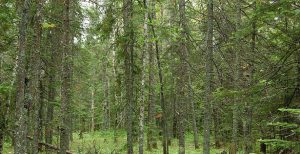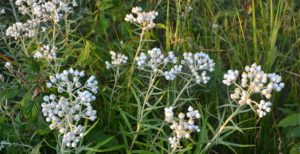Ontario Nature Blog
Receive email alerts about breaking conservation
and environmental news.
© Lora Denis
Guided hike, Manitouwadge © Mallory Vanier
One of the most challenging aspects of outreach is capturing and maintaining your audience’s attention. This is especially true when your audience is a group of high school students who are attending an obligatory event. The challenge is well-worth it, however, when you succeed in turning teens on to something new.
Using familiar technology to turn teens onto conservation science was my main objective during a recent visit to Thunder Bay. On this trip, I helped Ontario Nature’s Boreal Program staff deliver a citizen science event at a Manitouwadge high school.
After a 45-minute bus ride, we arrived at a NFMC reserve and immediately embarked on the first of two guided hikes. I led the group deep into the reserve in search of reptiles and amphibians. The rugged terrain was challenging, but we persevered and were rewarded with a spring peeper – not bad for a chilly September day.
Next, Will Stolz, Ontario Nature’s Forest and Freshwater Foods coordinator, led the students on a forest foraging walk, pointing out more than 20 easy-to-find edible plants. The more adventurous students tried a few of these plants, including balsam fir sap, otherwise known as “Nature’s Buckley’s.” The online Northern Forest Foraging Guide is available here.

Balsam fir stand © Eli Sagor
Back at the school, Mallory Vanier, Ontario Nature’s Boreal Program intern, and I presented on the importance of protected areas and citizen science. We discussed the threats facing Ontario’s reptiles and amphibians and the opportunities to contribute to their conservation.

Pearly everlasting © Mallory Vanier
Reflecting on the day, I believe that we were successful in turning at least a few teens into citizen scientists. And that is an awesome feeling!

Proposed 413 Route, Old School Road with farm and escarpment view © Noah Cole